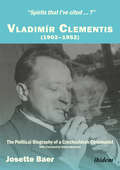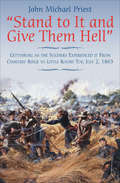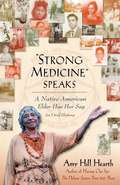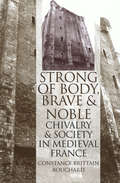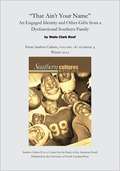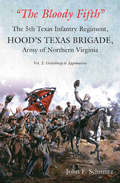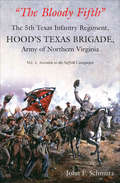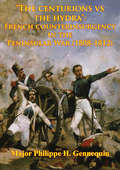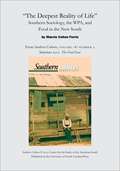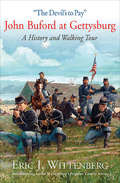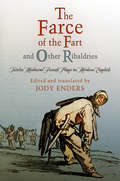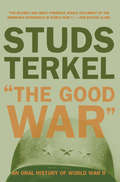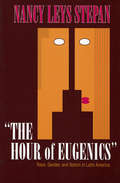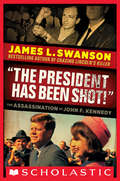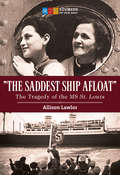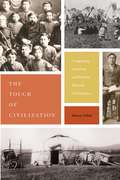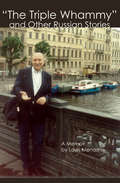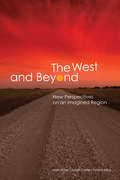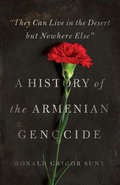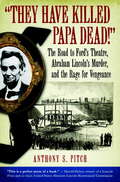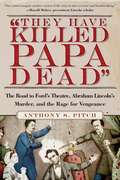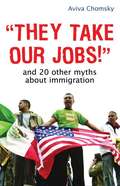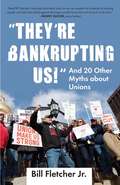- Table View
- List View
"Spirits that I've cited...?" Vladimír Clementis (1902–1952): The Political Biography of a Czechoslovak Communist
by Josette BaerBaer's biography of the former Czechoslovak foreign minister Vladimír Clementis (1902–1952) is the first historical study on the Communist politician who was executed with Rudolf Slánský and other top Communist Party members after the show trial of 1952. Born in Tisovec, Central Slovakia, Clementis studied law at Charles University in Prague in the 1920s and had his own law firm in Bratislava in the 1930s. After the Munich Agreement of 1938, he went into exile to France and Great Britain, where he worked at the Czechoslovak broadcast at the BBC for the exile government of Edvard Beneš. After the Second World War, Clementis' political career at the Czechoslovak Foreign Ministry blossomed. In 1945, he became Assistant Secretary of State under Foreign Minister Jan Masaryk. After Masaryk's mysterious death in 1948, Clementis was appointed foreign minister. This biography offers an unprecedented insight into the mind of a Slovak leftist intellectual of the interwar generation who died at the command of the comrade he had admired since his youth: Generalissimus Stalin.
"Stand to It and Give Them Hell": Gettysburg as the Soldiers Experienced it From Cemetery Ridge to Little Round Top, July 2, 1863
by John Michael PriestStand to It and Give Them Hell chronicles the Gettysburg fighting from Cemetery Ridge to Little Round Top on July 2, 1863, through the letters, memoirs, diaries, and postwar recollections of the men from both armies who struggled to control that hallowed ground.John Michael Priest, dubbed the Ernie Pyle of the Civil War soldier, wrote this book to help readers understand and experience, as closely as possible through the written word, the stress and terror of that fateful day in Pennsylvania. Readers will gain a deeper appreciation of the personal sacrifice made that awful day by privates and generals alike. This invaluable method uses their own words to paint a rich tapestry of their personal courage and cowardice, and their failures and triumphs.Nearly 60 detailed maps, mostly on the regimental level, illustrate the tremendous troop congestion in the Wheatfield, the Peach Orchard, and Devils Den. They accurately establish, by regiment or by company, the extent of the Federal skirmish line from Zieglers Grove to the Slyder farm and portray the final Confederate push against the Codori farm and the center of Cemetery Ridge, which three Confederate divisions in what is popularly known as Picketts Charge would unsuccessfully attack on the final day of fighting.This is a book about combat as seen through the eyes of those who waged it. There is no glamour here, and no adventure. Nor are there accusations, confessions, or second-guessing from the comfort of an easy chair. Instead, Stand to It and Give Them Hell offers the brutal, heart-wrenching story of a slice of Americas greatest battle as described by those who marched, fought, bled, and died there. This is their story, and it is one you will long remember.
"Strong Medicine" Speaks: A Native American Elder Has Her Say
by Amy Hill Hearth"Strong Medicine" Gould is an eighty-five-year-old Elder in her Lenni-Lenape tribe and community. Taking turns with the author as the two women alternate voices throughout this moving book, Strong Medicine tells of her ancestry.
"Strong of Body, Brave and Noble": Chivalry and Society in Medieval France
by Constance Brittain BouchardMedieval society was dominated by its knights and nobles. The literature created in medieval Europe was primarily a literature of knightly deeds, and the modern imagination has also been captured by these leaders and warriors. This book explores the nature of the nobility, focusing on France in the High Middle Ages (11th-13th centuries). Constance Brittain Bouchard examines their families; their relationships with peasants, townspeople, and clerics; and the images of them fashioned in medieval literary texts. She incorporates throughout a consideration of noble women and the nobility's attitude toward women.Research in the last two generations has modified and expanded modern understanding of who knights and nobles were; how they used authority, war, and law; and what position they held within the broader society. Even the concepts of feudalism, courtly love, and chivalry, once thought to be self-evident aspects of medieval society, have been seriously questioned. Bouchard presents bold new interpretations of medieval literature as both reflecting and criticizing the role of the nobility and their behavior. She offers the first synthesis of this scholarship in accessible form, inviting general readers as well as students and professional scholars to a new understanding of aristocratic role and function.
"That Ain’t Your Name”: An Engaged Identity and Other Gifts from a Dysfunctional Southern Family
by Wade Clark RoofIt was not until 1946 when my grandmother received a copy of the revised birth certificate in the mail from my father and blurted out to me 'That ain't your name,' that I really became aware of the problems. She quickly added, 'Your mother, she never got it right neither.'"This article appears in the Winter 2012 issue of Southern Cultures. The full issue is also available as an ebook.Southern Cultures is published quarterly (spring, summer, fall, winter) by the University of North Carolina Press. The journal is sponsored by the University of North Carolina at Chapel Hill's Center for the Study of the American South.
"The Bloody Fifth": Gettysburg to Appomattox (The 5th Texas Infantry Regiment, Hood's Texas Brigade, Army of Northern Virginia #2)
by John SchmutzThe second installment in a sweeping history of the 5th Texas InfantryThe Bloody Fifthone of only three Texas regiments to fight with Robert E. Lees Army of Northern Virginia. The 5th Texas established an exceptional combat record in an army known for its fighting capabilities. The regiment took part in 38 engagements, including nearly every significant battle in the Eastern Theater, as well as the Chickamauga, Chattanooga, and Knoxville campaigns in the Western Theater. The Bloody Fifth offers the first full-length study documenting this fabled regimental command.The first volume, Secession through the Suffolk Campaign, followed the regiment from its inception through the successful foraging campaign in southeastern Virginia in April 1863. Gettysburg to Appomattox continues the regiments rich history from its march north into Pennsylvania and the battle of Gettysburg, its transfer west to Georgia and participation in the bloody battle of Chickamauga, operations in East Tennessee, and the regiments return to Virginia for the overland battles (Wilderness to Cold Harbor), Petersburg campaign, and the march to Appomattox Court House. The narrative ends by following many of the regiments soldiers on their long journey home.Schmutzs definitive study is based upon years of archival and battlefield research that uncovered hundreds of primary sources, many never before used. The result is a lively account of not only the regiments marches and battles but a personal look into the lives of these Texans as they struggled to survive a vicious war more than 1,000 miles from home.The Bloody FifthThe 5th Texas Infantry Regiment, Hoods Texas Brigade, Army of Northern Virginia, with photos, original maps, explanatory footnotes, and important and useful appendices, is a significant contribution to the history of Texas and the American Civil War.
"The Bloody Fifth": The 5th Texas Infantry, Hood's Texas Brigade, Army Of Northern Virginia (The 5th Texas Infantry Regiment, Hood's Texas Brigade, Army of Northern Virginia #1)
by John F. SchmutzThe 5th Texas InfantryThe Bloody Fifthwas one of only three Texas regiments to fight with Robert E. Lees Army of Northern Virginia. Much like the army in which it served, the 5th Texas established a stellar combat record. The regiment took part in 38 engagements, including nearly every significant battle in the Eastern Theater, as well as the Chickamauga, Chattanooga, and Knoxville campaigns in the Western Theater. John F. Schmutzs The Bloody Fifth: The 5th Texas Infantry, Hoods Texas Brigade, Army of Northern Virginia is the first full-length study to document this fabled regimental command.The Bloody Fifth presents the regiments rich history from the secession of the Lone Star State and the organization of ten independent east and central Texas companies, through four years of arduous marching and fighting. The 5th Texass battlefield exploits are legendary, from its inaugural fighting on the Virginia peninsula in early 1862 through Appomattox. At Gettysburg, the Texans suffered horrendous losses repeatedly assaulting Little Round Tops rocky slopes, and in the Wilderness on May 6, 1864, helped save the collapsing Confederate line while the eyes of General Lee were upon them. But it was at Second Manassas where the regiment earned its enduring nickname by attacking and crushing the 5th New York Zouaves. Flushed with victory, the Texans pushed through the disintegrating Federal lines and outdistanced the remainder of the Brigadeas well as the rest of the Confederate army. In his official report on the battle, Gen. John Bell Hood, boasted that the 5th Texas had slipped the bridle. Its exploits that day earned the regiment its undying sobriquet The Bloody Fifth.Schmutzs monumental regimental history, which also details the personal lives of these Texas soldiers as they struggled to survive the war some 2,000 miles from home, is based upon years of archival research that has uncovered hundreds of primary sources. Complete with photos and original maps, The Bloody Fifth: The 5th Texas Infantry, Hoods Texas Brigade, Army of Northern Virginia is a significant contribution to the growing literature of the Civil War.
"The Centurions Vs The Hydra": French Counterinsurgency In The Peninsular War (1808-1812)
by Major Philippe H. GennequinConsidered the first documented commitment of a Western-style army facing a nation-wide insurgency, the Peninsular War deserves a critical examination of French pacification methods. In spite of a severe defeat, the Grande Armee achieved success while conducting counterinsurgency operations in Aragon and Andalusia. Based on Spanish, French and British primary sources, this thesis intended to examine if these results were connected to the personality of great commanders, flexible small unit leaders, or external factors. The underlying rationale was also to produce a broader picture on French counterinsurgency while bridging the imperial experience with the colonial period. The comparison of Marshal Soult and Marshal Suchet's case-studies demonstrated that French officers solved their operational dilemma in different manners. But the analysis also outlined a common denominator to their practices. Leverage of religion, build-up of native security forces, and development of an influence-driven campaign constituted the major tenets of this nascent doctrine of counterinsurgency.
"The Deepest Reality of Life": Southern Sociology, the WPA, and Food in the New South
by Marcie Cohen Ferris“‘I know your damned photographer’s soul writhes, but to hell with it. Do you think I give a damn about a photographer’s soul with Hitler at our doorstep?’” This article appears in the Summer 2012 issue of Southern Cultures. The full issue is also available as an ebook. Southern Cultures is published quarterly (spring, summer, fall, winter) by the University of North Carolina Press. The journal is sponsored by the University of North Carolina at Chapel Hill’s Center for the Study of the American South.
"The Devil's to Pay": John Buford at Gettysburg: A History and Walking Tour
by Eric J. WittenbergAn award-winning Civil War historian’s profile of the brilliant Union cavalry officer and the strategies he employed to prevent catastrophe at Gettysburg. The Battle of Gettysburg turned the tide of the Civil War. But the outcome of the decisive confrontation between North and South might have been dramatically different if not for the actions of Brig. Gen. John Buford, commander of the Union army’s First Cavalry Division. An award-winning chronicler of America’s War between the States and author of more than a dozen acclaimed works of historical scholarship, Eric J. Wittenberg now focuses on the iconic commanding officer known to his troops as “Honest John” and “Old Steadfast.” Wittenberg describes in fascinating detail the brilliant maneuvers Buford undertook to keep Gen. Robert E. Lee’s Confederate army at bay and later rescue what remained of the devastated First and Eleventh Corps.”The Devil’s to Pay” celebrates the stunning military achievements of an unparalleled tactical genius at the onset of the Gettysburg Campaign and paints an unforgettable portrait of a quiet, unassuming cavalryman who recognized a possible disaster in the making and took bold action to avert it. Based on a wealth of information from primary sources, “The Devil’s to Pay” includes pages of illustrations, maps, and photographs, as well as a walking and driving tour of the battlefield sites where America’s history was made at a staggeringly high cost in blood. A comprehensive tactical study that is both scholarly and eminently accessible, it is an essential addition to the library of any Civil War enthusiast.
"The Fact of the Matter" - Free Short Story
by Madeleine L 'EngleEnjoy this free short story from award-winning author Madeleine L'Engle's newest book, The Moment of Tenderness, a collection of 18 short stories, some never before published. It was a frigid winter day when Old Mrs. Campbell stormed into the Franklins' general store, decrying the devilish nature of her daughter-in-law-a sentiment that deeply disturbed Mrs. Franklin, considering the woman in question, Alicia, was oft described as "saintly" by everyone around her. When she leaves the store in a huff, Mrs. Franklin thinks she's done with Mrs. Campbell's ravings for the day-until the woman calls her late in the night, urgently demanding to see her. Blending elements of fantasy and horror, what transpires between the two women over the course of the evening will test the boundaries of reason, faith, and family-and prove that, in times of great danger, even strangers can come together to help one another in need. For more stories by Madeleine L'Engle, read The Moment of Tenderness, available now.
"The Farce of the Fart" and Other Ribaldries
by Jody EndersWas there more to medieval and Renaissance comedy than Chaucer and Shakespeare? Bien sûr. For a real taste of saucy early European humor, one must cross the Channel to France. There, in the fifteenth and early sixteenth centuries, the sophisticated met the scatological in popular performances presented by roving troupes in public squares that skewered sex, politics, and religion. For centuries, the scripts for these outrageous, anonymously written shows were available only in French editions gathered from scattered print and manuscript sources. Now prize-winning theater historian Jody Enders brings twelve of the funniest of these farces to contemporary English-speaking audiences in "The Farce of the Fart" and Other Ribaldries. Enders's translation captures the full richness of the colorful characters, irreverent humor, and over-the-top plotlines, all in a refreshingly uncensored American vernacular.Those who have never heard the one about the Cobbler, the Monk, the Wife, and the Gatekeeper should prepare to be shocked and entertained. "The Farce of the Fart" and Other Ribaldries is populated by hilarious characters high and low. For medievalists, theater practitioners, and classic comedy lovers alike, Enders provides a wealth of information about the plays and their history. Helpful details abound for each play about plot, character development, sets, staging, costumes, and props. This performance-friendly collection offers in-depth guidance to actors, directors, dramaturges, teachers, and their students."The Farce of the Fart" and Other Ribaldries puts fifteenth-century French farce in its rightful place alongside Chaucer, Shakespeare, commedia dell'arte, and Molière--not to mention Monty Python. Vive la Farce!
"The Good War": An Oral History of World War II
by Studs TerkelWinner of the Pulitzer Prize: &“The richest and most powerful single document of the American experience in World War II&” (The Boston Globe). &“The Good War&” is a testament not only to the experience of war but to the extraordinary skill of Studs Terkel as an interviewer and oral historian. From a pipe fitter&’s apprentice at Pearl Harbor to a crew member of the flight that dropped the atomic bomb on Nagasaki, his subjects are open and unrelenting in their analyses of themselves and their experiences, producing what People magazine has called &“a splendid epic history&” of WWII. With this volume Terkel expanded his scope to the global and the historical, and the result is a masterpiece of oral history. &“Tremendously compelling, somehow dramatic and intimate at the same time, as if one has stumbled on private accounts in letters locked in attic trunks . . . In terms of plain human interest, Mr. Terkel may well have put together the most vivid collection of World War II sketches ever gathered between covers.&” —The New York Times Book Review &“I promise you will remember your war years, if you were alive then, with extraordinary vividness as you go through Studs Terkel&’s book. Or, if you are too young to remember, this is the best place to get a sense of what people were feeling.&” —Chicago Tribune &“A powerful book, repeatedly moving and profoundly disturbing.&” —People
"The Hour of Eugenics": Race, Gender, and Nation in Latin America
by Nancy Leys StepanEugenics was a term coined in 1883 to name the scientific and social theory which advocated "race improvement" through selective human breeding. In Europe and the United States the eugenics movement found many supporters before it was finally discredited by its association with the racist ideology of Nazi Germany. Examining for the first time how eugenics was taken up by scientists and social reformers in Latin America, Nancy Leys Stepan compares the eugenics movements in Mexico, Brazil, and Argentina with the more familiar cases of Britain, the United States, and Germany. In this highly original account, Stepan sheds new light on the role of science in reformulating issues of race, gender, reproduction, and public health in an era when the focus on national identity was particularly intense. Drawing upon a rich body of evidence concerning the technical publications and professional meetings of Latin American eugenicists, she examines how they adapted eugenic principles to local contexts between the world wars. Stepan shows that Latin American eugenicists diverged considerably from their counterparts in Europe and the United States in their ideological approach and their interpretations of key texts concerning heredity.
"The President Has Been Shot!": The Assassination Of John F. Kennedy
by James L. SwansonA breathtaking and dramatic account of the JFK assassination by the NEW YORK TIMES bestselling author of CHASING LINCOLN'S KILLER!In his new young-adult book on the Kennedy assassination, James Swanson will transport readers back to one of the most shocking, sad, and terrifying events in American history. As he did in his bestselling Scholastic YA book, CHASING LINCOLN'S KILLER, Swanson will deploy his signature "you are there" style -- a riveting, ticking-clock pace, with an unprecedented eye for dramatic details and impeccable historical accuracy -- to tell the story of the JFK assassination as it has never been told before.The book will be illustrated with archival photos, and will have diagrams, source notes, bibliography, places to visit, and an index.
"The Saddest Ship Afloat": The Tragedy of the MS St. Louis (Stories of Our Past)
by Allison LawlorA true story of hundreds of Jewish refugees and the sea journey they hoped would save them. On May 13, 1939, the eve of the Second World War, the MS St. Louis left port in Hamburg, Germany, headed for Havana, Cuba. Among the ship’s passengers were more than six hundred Jews attempting to escape Nazi rule. But most of the visas the passengers had purchased turned out to be fake, and after several days in limbo in Havana’s harbor, the ship’s captain turned back for Europe. Canadian and American activists petitioned their governments to accept the refugees on humanitarian grounds, but to no avail. On its return, the ship would distribute its passengers among European countries, and over the course of the war, an estimated 250 would die in Nazi concentration camps.This volume in the Stories of our Past series is illustrated with photos and sidebar features on the voyage, glimpses into the lives of passengers, a look at Canada’s postwar refugee policy, and memorials dedicated to preserving the story of this tragic event in Canadian immigration history.
"The Touch of Civilization": Comparing American and Russian Internal Colonization
by Steven SabolThe Touch of Civilization is a comparative history of the United States and Russia during their efforts to colonize and assimilate two indigenous groups of people within their national borders: the Sioux of the Great Plains and the Kazakhs of the Eurasian Steppe. In the revealing juxtaposition of these two cases author Steven Sabol elucidates previously unexplored connections between the state building and colonizing projects these powers pursued in the nineteenth century. This critical examination of internal colonization—a form of contiguous continental expansion, imperialism, and colonialism that incorporated indigenous lands and peoples—draws a corollary between the westward-moving American pioneer and the eastward-moving Russian peasant. Sabol examines how and why perceptions of the Sioux and Kazakhs as ostensibly uncivilized peoples and the Northern Plains and the Kazakh Steppe as “uninhabited” regions that ought to be settled reinforced American and Russian government sedentarization policies and land allotment programs. In addition, he illustrates how both countries encountered problems and conflicts with local populations while pursuing their national missions of colonization, comparing the various forms of Sioux and Kazakh martial, political, social, and cultural resistance evident throughout the nineteenth century. Presenting a nuanced, in-depth history and contextualizing US and Russian colonialism in a global framework, The Touch of Civilization will be of significant value to students and scholars of Russian history, American and Native American history, and the history of colonization.
"The Triple Whammy" and Other Russian Stories: A Memoir
by Luis MenasheAn American historian, film specialist, and documentary filmmaker shares candid stories of his life in Russia during and after the Cold War. A captivating lifetime of personal and professional experiences by an American historian, film specialist, and documentary filmmaker in the Soviet Union and post-Soviet Russia. The author&’s experiences as a radical in the turbulent 1960s, and his eventual disenchantment offer some precedents and perspectives to all those on the Left, Center, or Right interested in the fluctuations of American politics. The vivid log of hopes and disillusions is related in a candid, non-academic style, and set against a panorama of history and politics in the late twentieth century.&“A self-described scholar-activist, Menashe weaves together political, intellectual, and cultural currents of leftist life, and draws a vivid picture of people and places, life-changing adventures, the intellectual and political challenges of graduate school during the Cold War, encounters with key Russian literary and political figures, and much more. Then comes the crash, the Soviet Union&’s end. As in all failed love affairs, Menashe retains some sweet memories. The reader will taste them long after reading the memoir.&” —Carole Turbin, Professor Emerita, History and Sociology, SUNY/Empire State College
"The West and Beyond"
by Sarah Carter Alvin Finkel Peter FortnaThe West and Beyond explores the state of Western Canadian history, showcasing the research interests of a new generation of scholars while charting new directions for the future and stimulating further interrogation of our past. This dynamic collection encourages dialogue among generations of historians of the West, and among practitioners of diverse approaches to the past. It also reflects a broad range of disciplinary and professional boundaries, offering new ways to understand the West.
"They Can Live in the Desert but Nowhere Else": A History of the Armenian Genocide
by Ronald Grigor SunyStarting in early 1915, the Ottoman Turks began deporting and killing hundreds of thousands of Armenians in the first major genocide of the twentieth century. By the end of the First World War, the number of Armenians in what would become Turkey had been reduced by ninety percent--more than a million people. A century later, the Armenian Genocide remains controversial but relatively unknown, overshadowed by later slaughters and the chasm separating Turkish and Armenian versions of events. In this definitive narrative history, Ronald Suny cuts through nationalist myths, propaganda, and denial to provide an unmatched account of when, how, and why the atrocities of 1915-16 were committed.As it lost territory during the war, the Ottoman Empire was becoming a more homogenous Turkic-Muslim state, but it still contained large non-Muslim communities, including the Christian Armenians. The Young Turk leaders of the empire believed that the Armenians were internal enemies secretly allied to Russia and plotting to win an independent state. Suny shows that the great majority of Armenians were in truth loyal subjects who wanted to remain in the empire. But the Young Turks, steeped in imperial anxiety and anti-Armenian bias, became convinced that the survival of the state depended on the elimination of the Armenians. Suny is the first to explore the psychological factors as well as the international and domestic events that helped lead to genocide.Drawing on archival documents and eyewitness accounts, this is an unforgettable chronicle of a cataclysm that set a tragic pattern for a century of genocide and crimes against humanity.
"They Have Killed Papa Dead!" The Road to Ford's Theatre, Abraham Lincoln's Murder, and the Rage for Vengeance
by Anthony S. PitchThe assassination of Abraham Lincoln is a central drama of the American experience. Its impact is felt to this day, and the basic story is known to all. Anthony Pitch's thrilling account of the Lincoln conspiracy and its aftermath transcends the mere facts of that awful night during which dashing actor John Wilkes Booth shot Lincoln in the head and would-be assassin Lewis Payne butchered Secretary of State William Seward in the bed of his own home. "They Have Killed Papa Dead!" transports the reader to one of the most breathtaking moments in history, and reveals much that is new about the stories, passions, and times of those who shaped this great tragedy. Virtually every word of Anthony Pitch's account is based on primary source material: new quotes from previously unpublished diaries, letters and journals - authentic contemporary voices writing with freshness and clarity as eyewitnesses or intimate participants - new images, a new vision and understanding of one of America's defining moments. With an unwavering fidelity to historical accuracy, Pitch provides new confirmation of threats against the president-elect's life as he traveled to Washington by train for his first inauguration, and a vivid personal account of John Wilkes Booth being physically restrained from approaching Lincoln at his second inauguration. Perhaps most chillingly, new details come to light about conditions in the special prison where the civilian conspirators accused of participating in the Lincoln assassination endured tortuous conditions in extreme isolation and deprivation, hooded and shackled, before and even during their military trial. Pitch masterfully synthesizes the findings of his prodigious research into a tight, gripping narrative that adds important new insights to our national story.
"They Have Killed Papa Dead!": The Road to Ford's Theatre, Abraham Lincoln's Murder, and the Rage for Vengeance
by Anthony PitchThe assassination of Abraham Lincoln is a central drama of the American experience. Its impact is felt to this day, and the basic story is known to all. Anthony Pitch’s thrilling account of the Lincoln conspiracy and its aftermath transcends the mere facts of that awful night during which dashing actor John Wilkes Booth shot Lincoln in the head and would-be assassin Lewis Payne butchered Secretary of State William Seward in the bed of his own home. “They Have Killed Papa Dead!” transports the reader to one of the most breathtaking moments in history, and reveals much that is new about the stories, passions, and times of those who shaped this great tragedy.Virtually every word of Anthony Pitch’s account is based on primary source material: new quotes from previously unpublished diaries, letters and journals – authentic contemporary voices writing with freshness and clarity as eyewitnesses or intimate participants – new images, a new vision and understanding of one of America’s defining moments. With an unwavering fidelity to historical accuracy, Pitch provides new confirmation of threats against the president-elect’s life as he traveled to Washington by train for his first inauguration, and a vivid personal account of John Wilkes Booth being physically restrained from approaching Lincoln at his second inauguration. Perhaps most chillingly, new details come to light about conditions in the special prison where the civilian conspirators accused of participating in the Lincoln assassination endured tortuous conditions in extreme isolation and deprivation, hooded and shackled, before and even during their military trial. Pitch masterfully synthesizes the findings of his prodigious research into a tight, gripping narrative that adds important new insights to our national story.
"They Have Killed Papa Dead!": The Road to Ford's Theatre, Abraham Lincoln's Murder, and the Rage for Vengeance
by Anthony S. PitchThe assassination of Abraham Lincoln is a central drama of the American experience. Its impact is felt to this day, and the basic story is known to all. Anthony Pitch's thrilling account of the Lincoln conspiracy and its aftermath transcends the mere facts of that awful night during which dashing actor John Wilkes Booth shot Lincoln in the head and would-be assassin Lewis Payne butchered Secretary of State William Seward in the bed of his own home. <p><p> "They Have Killed Papa Dead!" transports the reader to one of the most breathtaking moments in history, and reveals much about the stories, passions, and times of those who shaped this great tragedy. Virtually every word of Anthony Pitch's account is based on primary source material: quotes from previously unpublished documents, diaries, letters, and journals. With an unwavering fidelity to historical accuracy, Pitch provides confirmation of threats against the president-elect's life as he traveled to Washington by train for his first inauguration, and a vivid personal account of John Wilkes Booth being physically restrained from approaching Lincoln at his second inauguration. <p> Perhaps most chillingly, details come to light about conditions in the special prison where the civilian conspirators accused of participating in the Lincoln assassination endured tortuous conditions in extreme isolation and deprivation, hooded and shackled, before and even during their military trial. Pitch masterfully synthesizes the findings of his prodigious research into a tight, gripping narrative that adds important insights to our national story.
"They Take Our Jobs!": And Twenty Other Myths About Immigration
by Aviva Chomsky[Back cover] IN THIS GROUNDBREAKING WORK, Aviva Chomsky dismantles twenty-one of the most widespread myths and beliefs about immigrants and immigration. "They Take Our Jobs!" challenges the underlying assumptions that fuel these misinformed claims about immigrants, radically altering our notions of citizenship, discrimination, and U.S. history.
"They're Bankrupting Us!"
by Bill Fletcher Jr.From Wisconsin to Washington, DC, the claims are made: unions are responsible for budget deficits, and their members are overpaid and enjoy cushy benefits. The only way to save the American economy, pundits claim, is to weaken the labor movement, strip workers of collective bargaining rights, and champion private industry. In "They're Bankrupting Us!": And 20 Other Myths about Unions, labor leader Bill Fletcher Jr. makes sense of this debate as he unpacks the twenty-one myths most often cited by anti-union propagandists. Drawing on his experiences as a longtime labor activist and organizer, Fletcher traces the historical roots of these myths and provides an honest assessment of the missteps of the labor movement. He reveals many of labor's significant contributions, such as establishing the forty-hour work week and minimum wage, guaranteeing safe workplaces, and fighting for equity within the workforce. This timely, accessible, "warts and all" book argues, ultimately, that unions are necessary for democracy and ensure economic and social justice for all people.
